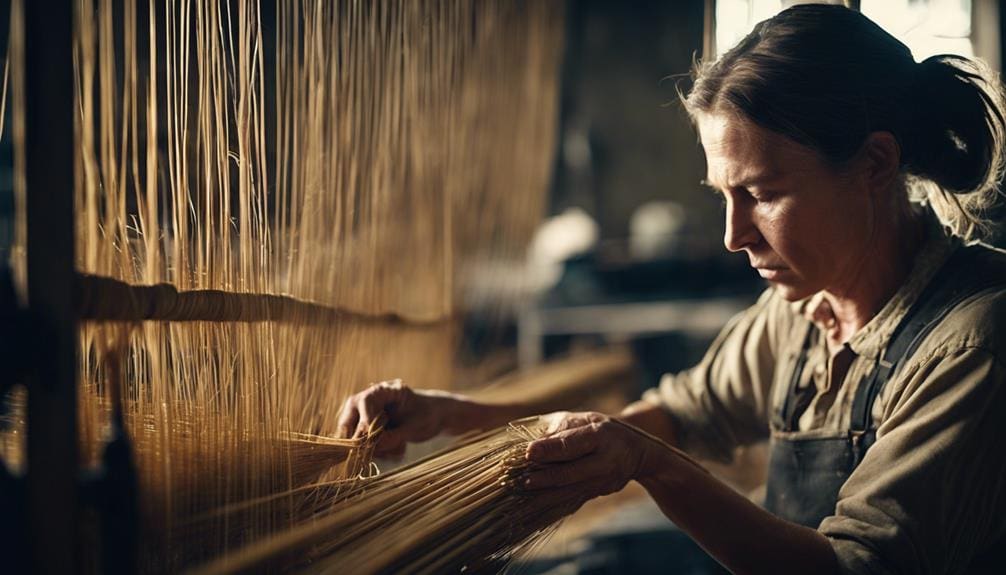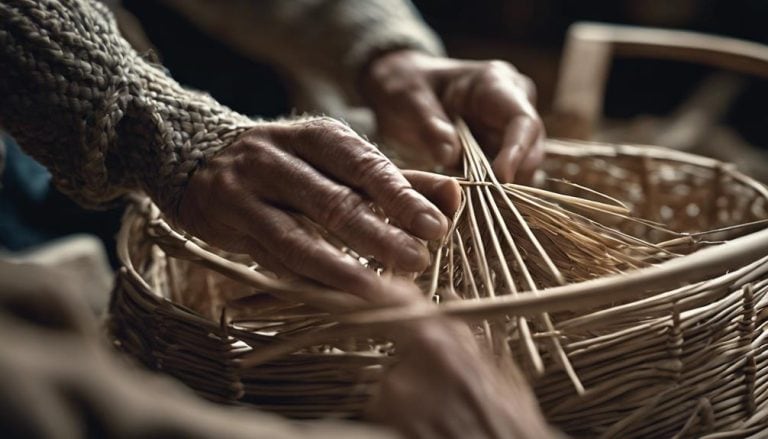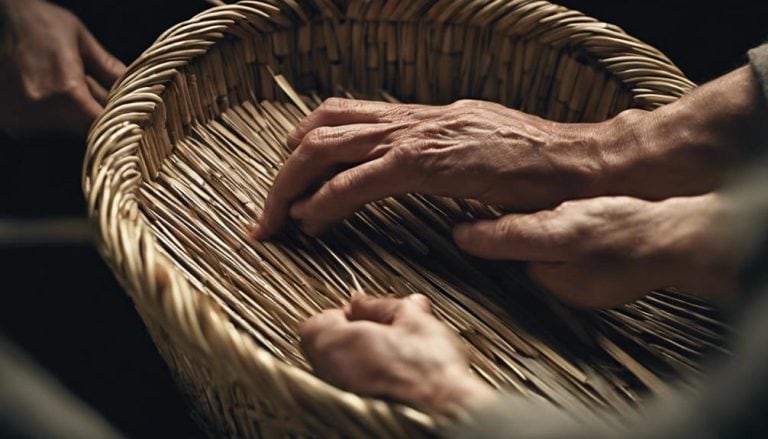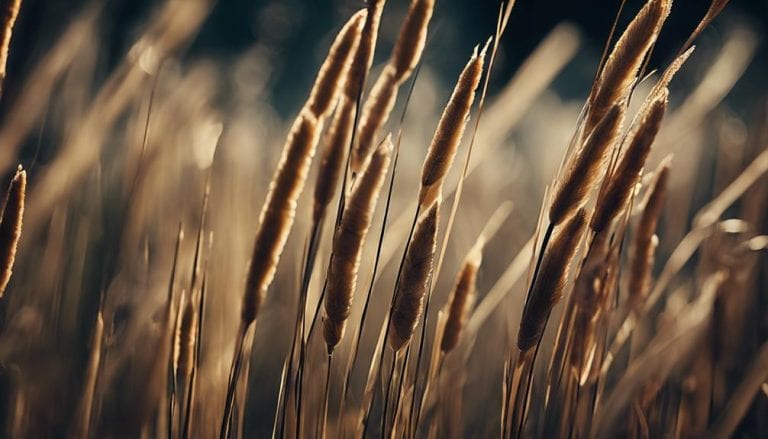The Importance of Rush Reeds in Weaving
As the saying goes, “A stitch in time saves nine,” rush reeds are pivotal in weaving. The intricate dance between warp and weft threads relies heavily on these unassuming yet indispensable tools. But why exactly are rush reeds considered the unsung heroes of the weaving world? Let’s explore their significance beyond mere functionality and into craftsmanship and sustainability.
Rush reeds play a crucial role in weaving by creating space for the weft yarn to pass through, which is essential for producing textiles. They are fundamental tools that aid in the intricate process of interlacing threads to form fabric.
Key Takeaways
- Rush reeds are integral to maintaining warp tension and ensuring even weft distribution in weaving.
- They offer versatility, durability, and creative potential in producing strong, resilient textiles.
- Rush reeds support sustainability with minimal environmental impact, promoting eco-friendly textile production.
- The visual appeal of rush reeds enhances textile designs with intricate patterns, vibrant colors, and unique textures.
Historical Significance of Rush Reeds
Indisputably, rush reeds hold a profound historical significance in weaving, tracing back to ancient civilizations such as the Egyptians and Native Americans. These reeds play a pivotal role in preserving cultural heritage through artistic expression, as evidenced by their use in creating burial mats and other ceremonial artifacts. The intricate weaving patterns achieved with rush reeds served functional purposes and reflected the artistic mastery and cultural symbolism of the communities that utilized them.
Throughout history, rush reeds have been integral to various cultural practices, embodying traditions passed down through generations. Their presence in archaeological sites dating back to prehistoric times underscores their enduring importance in weaving traditions worldwide. Depicted in medieval manuscripts and artworks, rush reeds symbolize the intersection of practicality and artistic expression, showcasing ancient weavers’ skilled craftsmanship and creativity.
The global significance of rush reeds in traditional crafts highlights their universal appeal and timeless beauty, transcending geographical boundaries to connect diverse cultures through a shared appreciation for the art of weaving.
Functionality in Maintaining Warp Tension
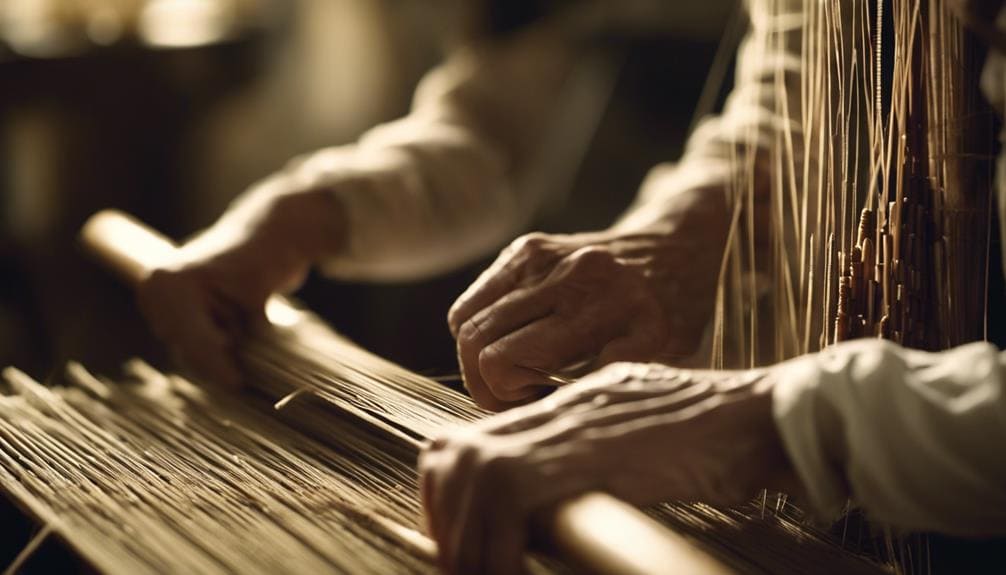
Crucial for maintaining warp tension in weaving, rush reeds serve as essential supportive elements that ensure the stability and structure of the woven fabric. These reeds play a fundamental role in weaving stability by keeping the warp threads aligned and under appropriate tension throughout the process.
Without rush reeds, the warp threads might shift or loosen, leading to irregularities in the weave and compromising the overall quality of the textile. The structural support provided by rush reeds helps maintain the fabric’s integrity and contributes to the even distribution of the weft threads.
Moreover, rush reeds facilitate warp thread alignment by creating a consistent spacing between the threads. This alignment is vital for achieving a uniform weave pattern and preventing distortion in the final textile. Additionally, the natural flexibility of rush reeds allows for precise tension adjustment, ensuring that the warp threads remain taut and properly positioned as the weaving progresses. In essence, rush reeds are indispensable tools that promote weaving precision and excellence by supporting warp tension and alignment.
Contribution to Even Weft Distribution
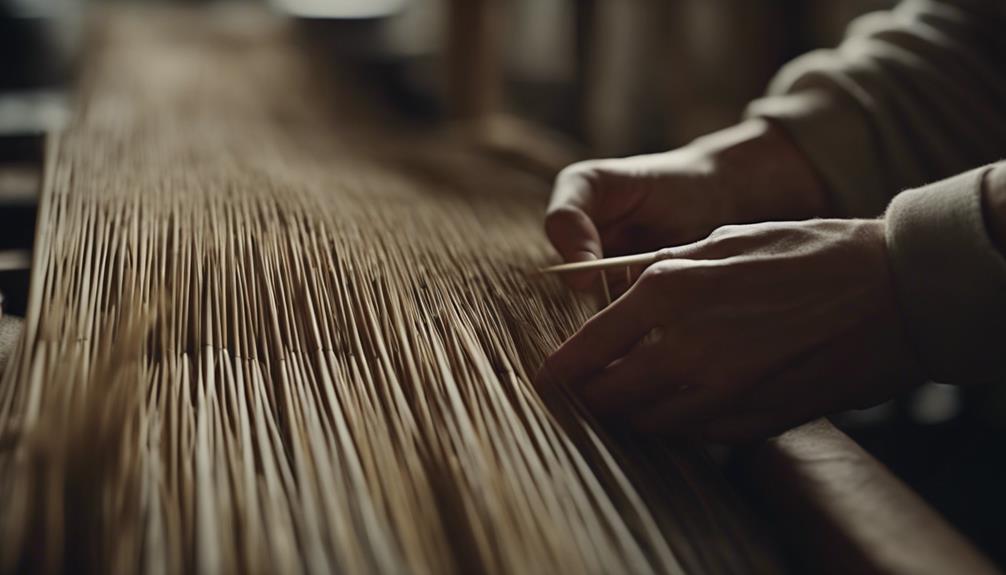
With a focus on enhancing the uniformity of woven fabrics, rush reeds significantly contribute to the even distribution of weft threads in weaving by providing consistent thickness and structural support. The weaving process heavily relies on weaving techniques that involve weft manipulation, where rush reeds play a crucial role. The material properties of rush reeds, characterized by natural flexibility and uniformity, help maintain balanced tension throughout the weaving. This ensures a smooth and even surface on the fabric being created.
Weavers depend on rush reeds to achieve a cohesive and uniform appearance in the woven fabric, essential for producing high-quality textiles. By using rush reeds, we can precisely control the density and alignment of the woven threads, resulting in a well-balanced and visually appealing textile. Rush reeds aid in maintaining straight edges and preventing irregularities in the weaving pattern, ultimately enhancing the overall aesthetics of the textile.
Impact on Fabric Strength and Cohesion
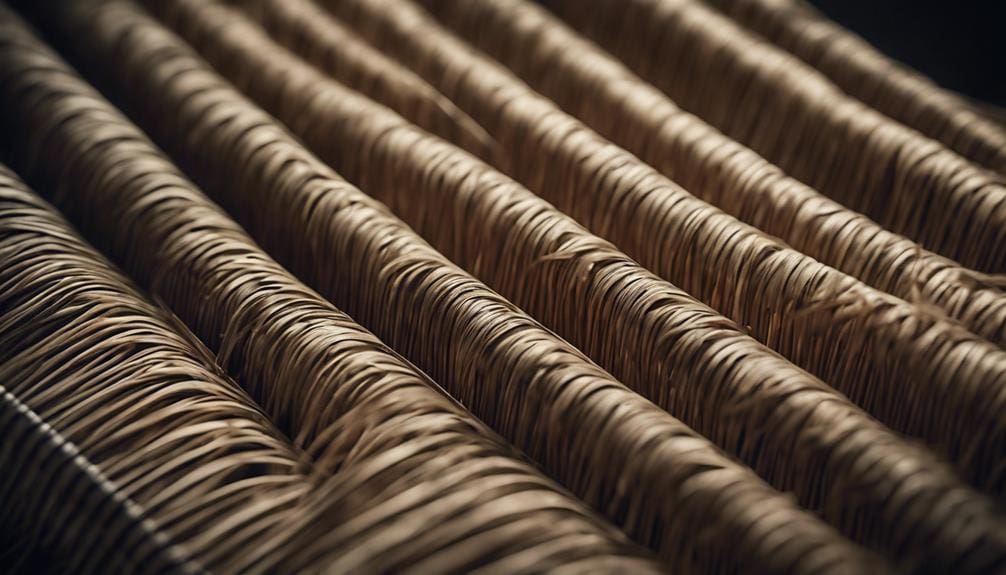
Enhancing fabric strength and cohesion, rush reeds play a pivotal role in weaving by providing natural reinforcement through their durable and flexible fibers. The fiber reinforcement offered by rush reeds contributes significantly to the durability of woven fabrics, making them more resistant to tearing and fraying. This natural cohesion not only enhances the overall strength of the fabric but also increases its wear resistance, ensuring longevity and sustainability.
Moreover, rush reeds’ ability to create a cohesive structure within the fabric protects against external elements, such as abrasions and environmental stressors. By interlocking with other fibers during weaving, rush reeds help prevent unraveling and ensure the fabric maintains its integrity over time. This cohesion also enhances the tensile strength of the fabric, making it suitable for various applications where durability and resilience are essential. In essence, the incorporation of rush reeds into weaving techniques elevates the quality and performance of woven materials, highlighting their importance in enhancing fabric strength and cohesion.
Essential Tool for Weavers’ Success
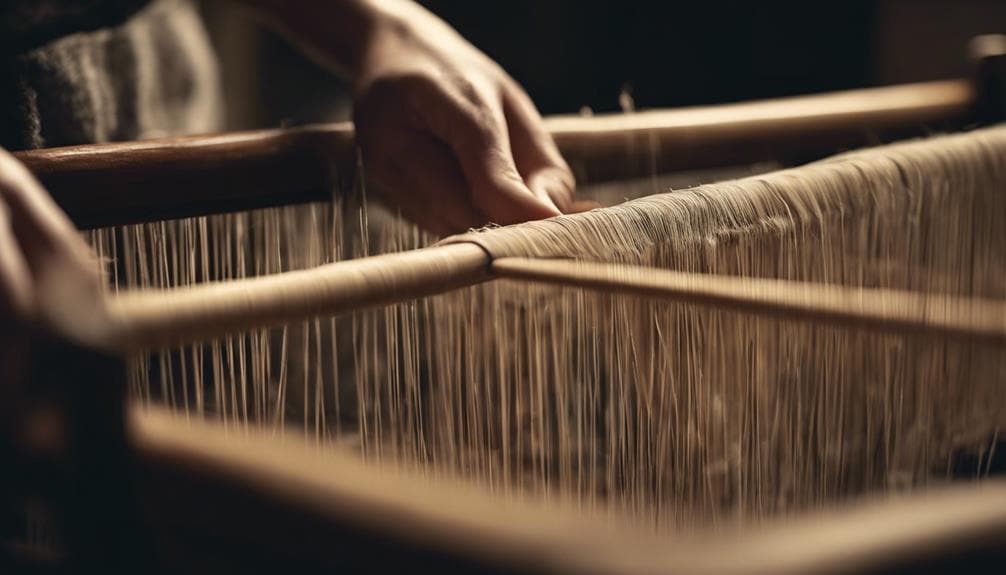
In weaving, using rush reeds as a fundamental tool is indispensable for weavers striving for success in creating intricate designs and ensuring the durability of their woven products. Rush reeds play a crucial role in the weaving traditions of various cultures, offering a sustainable source of natural fibers essential for traditional weaving techniques.
Here are four reasons why rush reeds are an essential tool for weavers’ success:
- Raw Material: Rush reeds provide the necessary raw material for weaving, enabling weavers to craft intricate designs and patterns.
- Unique Properties: The unique properties of rush reeds allow for the creation of complex designs, contributing to the aesthetic appeal of woven products.
- Durability: The quality and strength of rush reeds contribute to the durability and longevity of woven products, ensuring that the final pieces stand the test of time.
- Historical Significance: Rush reeds have been a staple in weaving communities for centuries, underscoring their importance in preserving traditions and techniques.
Versatility in Weaving Techniques

The versatility of rush reeds in weaving techniques enables artisans to explore many intricate patterns and designs, showcasing the material’s adaptability and creative potential in traditional craftsmanship. When weaving with rush reeds, the creative patterns and intricate designs that can be achieved are truly remarkable. These reeds offer a level of flexibility and durability that allows for the production of sturdy mats, baskets, and various woven products that stand the test of time.
The traditional weaving methods enhanced by rush reeds help preserve cultural heritage and highlight the material’s unique properties, which are ideal for creating textured and visually appealing woven items. Through experimentation with different weaving styles, artisans can truly showcase the adaptability of rush reeds in various projects, pushing the boundaries of what can be achieved in weaving.
Importance for Quality Textile Creation

Crucial for producing high-quality textiles, rush reeds bring durability, flexibility, and unique weaving patterns to the weaving process. Rush reeds, integral to textile creation, offer myriad benefits that elevate the quality of woven fabrics.
Here’s why rush reeds play a pivotal role in crafting exceptional textiles:
- Traditional Craftsmanship: Incorporating rush reeds into weaving techniques honors the heritage of conventional craftsmanship, adding a cultural richness to the textiles.
- Durability Benefits: Textiles woven with rush reeds boast enhanced durability, ensuring longevity and resilience in everyday use.
- Visual Appeal: The use of rush reeds results in textiles with a visually captivating aesthetic, drawing attention to the intricate patterns and designs woven into the fabric.
- Intricate Patterns: Weaving with rush reeds allows for creating elaborate patterns, adding a layer of sophistication and artistry to the textiles.
Frequently Asked Questions
What Is the Difference Between Reeds and Rushes?
In weaving, rushes differ from reeds in their structure and application. Rushes, known for flexibility, are ideal for intricate patterns. Understanding these differences is essential for mastering weaving techniques and creating unique woven products.
What Are the Uses of Rushes?
Uses of rushes are diverse, from weaving chair bottoms to crafting ropes. Their flexibility and durability make them ideal for traditional crafts. Benefits extend to lighting, flooring, and metal scouring. Rush reeds are essential natural materials in sustainable practices.
What Is Reed and Its Function?
Reed, a thin strip made from materials like bamboo, guides weaving threads, ensuring uniformity. It separates warp threads, controlling tension for quality textiles. The function of reed in weaving is crucial for precise patterns and structured fabrics.
What Is the Pith of the Rush Plant?
I delve into the rush plant’s intricate core, unveiling its pith extraction process. This soft, absorbent tissue, vital for weaving techniques, showcases nature’s craftsmanship. Its porous design captivates, holding secrets of ancient artistry.
Conclusion
In conclusion, rush reeds are the unsung heroes of weaving, weaving the fabric of history with their sustainable and versatile properties. Like threads in a tapestry, they intertwine tradition and innovation, creating a strong and cohesive fabric of sustainability. Rush reeds not only contribute to the success of weavers but also play a vital role in maintaining the integrity of quality textiles. Embracing rush reeds is like weaving a tapestry of sustainability for a greener tomorrow.

